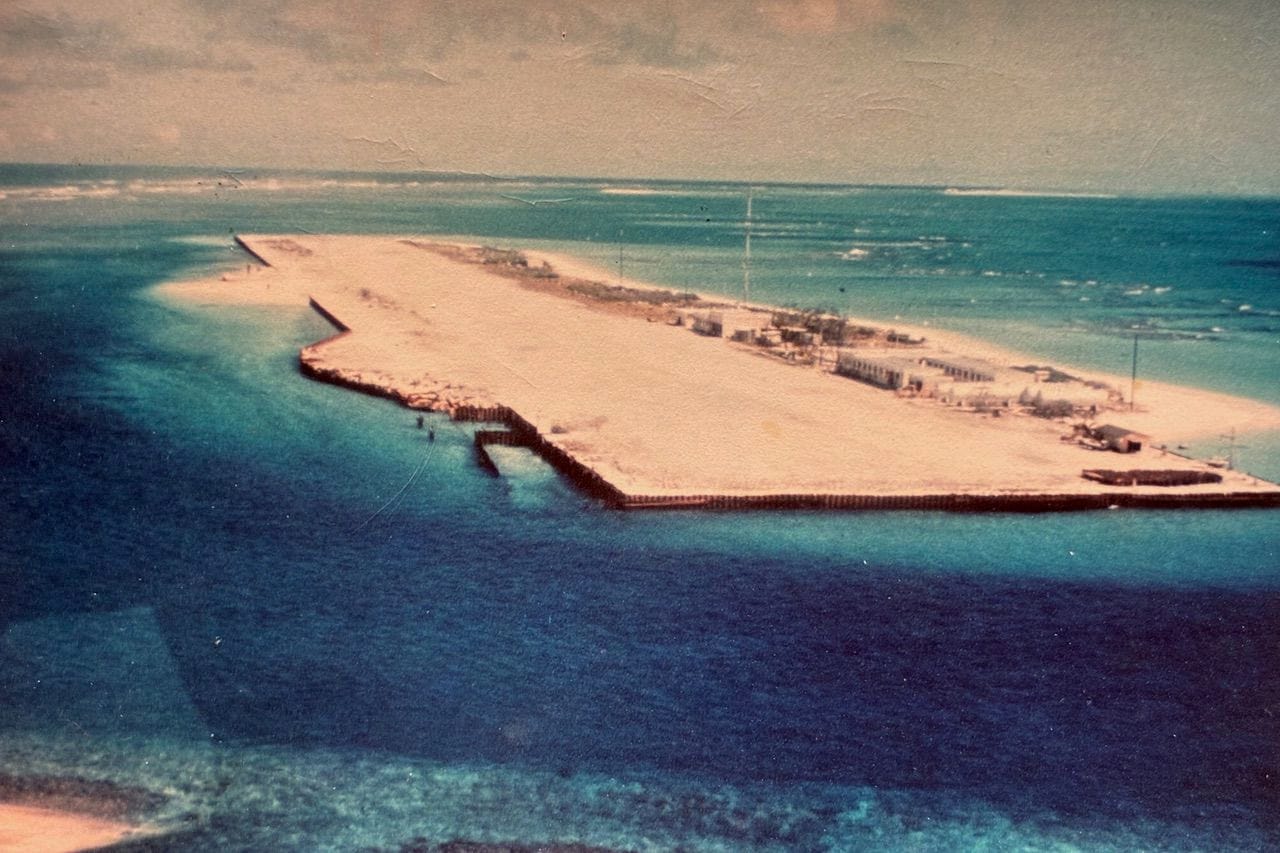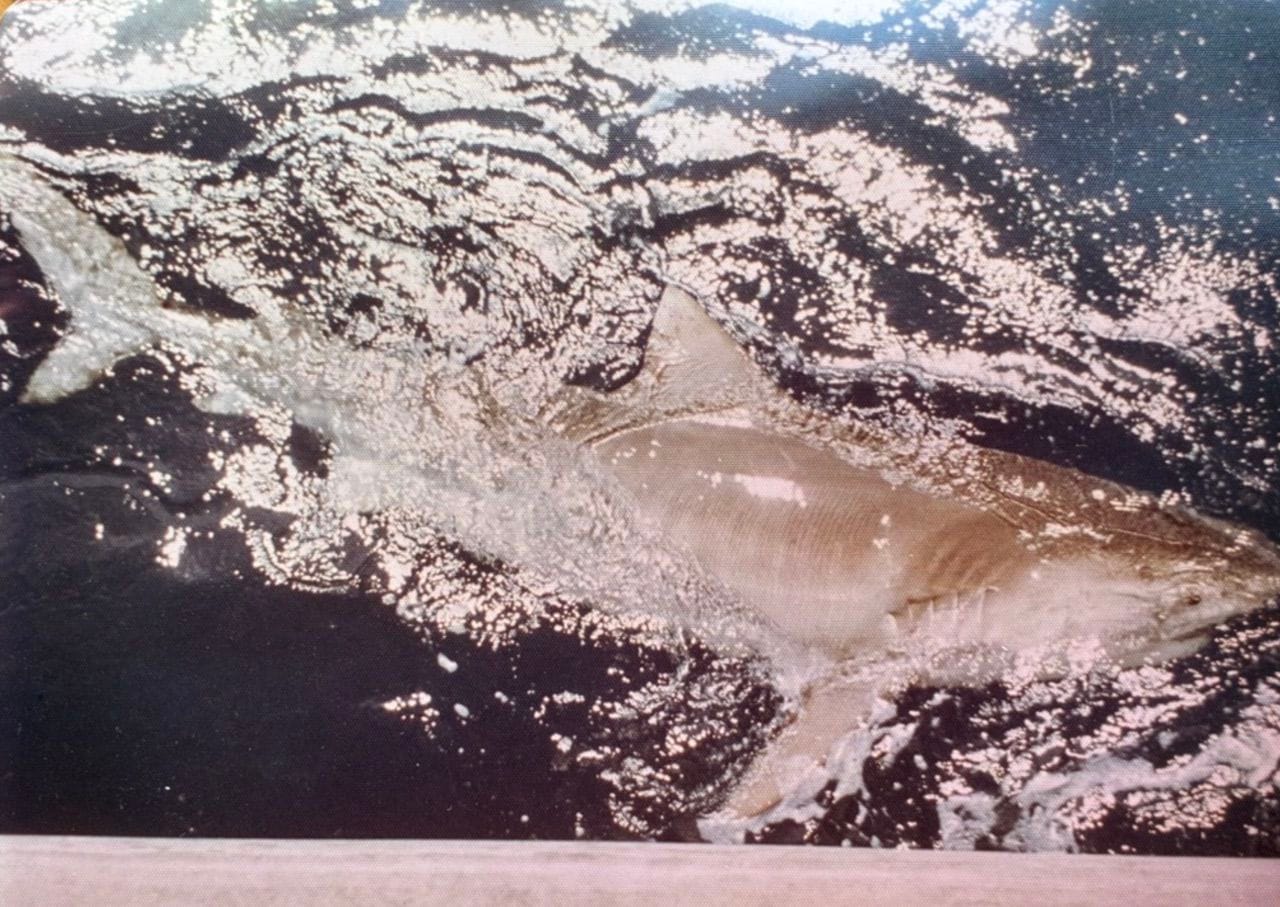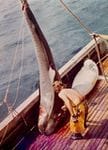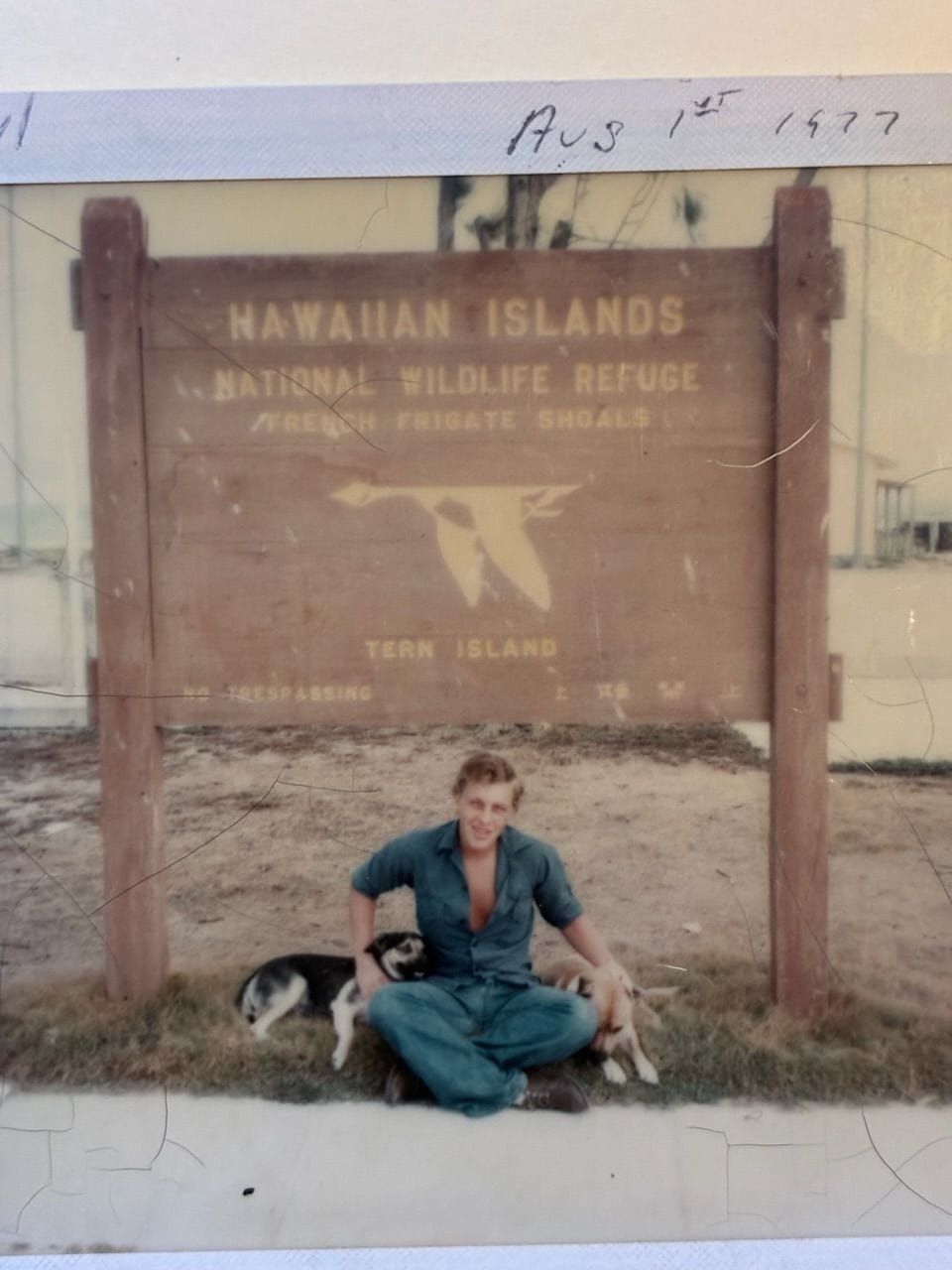Plex: 6 August 2025
“Leviathan” documentary screening in Brooklyn; Like the River Moved Through; DayBalancer Q&A; Civilization Evolving; Shark Fishing at French Frigate Shoals

The Biweekly Plex Dispatch is an inter-community newspaper published by Collective Sense Commons on first and third Wednesdays of each month. Price per issue: 1 USD, or your choice of amount (even zero).
In This Issue
- “Leviathan” documentary screening in Brooklyn (Vincent Arena)
- Like the River Moved Through (Kevin Jones)
- DayBalancer Q&A (Jessie Upp)
- Civilization Evolving (Peter Kaminski)
- Shark Fishing at French Frigate Shoals (Ken Homer)
“Leviathan” documentary screening in Brooklyn
by Vincent Arena
I’m hosting a “Leviathan” documentary screening in Brooklyn on Sunday, August 10th.
https://partiful.com/e/mfSOe8rSr2gBKf3WeXs8
Leviathan is an interesting and thought-provoking piece that we’re screening at the Metacrises NYC community–a group of us who are figuring out how to exist in a world of intersecting crises and how to find balance within that.
The film explores the tradeoffs and tensions between embodiment and abstraction that have been coded into our society, including how many of our systems aren’t designed to allow trust to be scaled effectively.
It doesn’t provide many solutions, but I found it really striking in how it examines our orientation to the scale of our systems and the ways our bodies and minds aren’t keeping up–looking at this as one of the root causes of our current predicaments.
charles blass
Like the River Moved Through
by Kevin Jones
We are finally getting a place to live, post-Helene, in an apartment in the River Arts District of Asheville, at least for nine months. By then we should have figured out what to do with our farm and the house that was flooded.
Our dogs have been kept by some friends for the past three months while we travelled in Europe. I went by to talk to them today, and said we were moving to the apartment in about two weeks, where we could keep them again.
And somehow I felt the loss from the flood, the loss of our idyllic farm, when I was petting them, that I had not felt since the storm September 27th of last year. Touching my dog, opened that door to the feeling. It made me tired, but also glad, as it moved through me, like the river moved through what was my house.
charles blass
DayBalancer Q&A
by Jessie Upp
[Ed. note: Jessie’s building an awesome community over at DayBalancer. I sent her some questions to help Plex readers learn more about what she’s building and why. Here are Jessie’s gracious answers. – Pete]
What are you working to accomplish with DayBalancer?
We’re building a circular talent network that connects professionals with meaningful work opportunities - whether that meaning comes from social impact, personal mastery, community connection, or economic contribution. Instead of endless job applications, we create a peer-to-peer ecosystem where compatible opportunities find you based on your values, skills, and preferences.
Our long-term vision is to become a member-owned cooperative, where the community has democratic governance and shared ownership of the platform itself.
What’s your status right now?
Early stage with proven concept. We have 400 professionals in our free network and successful case studies from Seattle Tech Week and Climate Week events (hundreds of participants). We’re transitioning from free pilot testing to our first paying customers.
What’s your business model? Current runway? Plan to extend runway?
SaaS platform with these revenue streams:
- Event networking services: $8/person for speed networking at conferences and events
- Community platform branding: $99-$3,000/month for professionals wanting branded network visualizations
- Community data visualization and analytics services
Free for: Job seekers, job posters, recruiters (no placement fees or revenue sharing)
Current runway: Bootstrap funded, need customers immediately for sustainability
What’s your social good model?
We address systemic barriers in hiring (marginalization, ageism, racism, sexism, ableism, classism) through our peer-to-peer network. Instead of single-point-of-failure employment, we create multiple value exchange pathways so one disruption doesn’t destroy someone’s stability.Our cooperative-building structure ensures value flows to community members rather than external shareholders.
What resources are you looking for?
- Event producers and community leaders ready to pilot our services
- Sales and business development support
- Future cooperative members once we establish revenue
- Pilot testing partners for our premium features
How can I learn more / join DayBalancer?
- Professionals: Join our free network - create a profile and let opportunities find you
- Event producers: Test our $8/person networking service for your next event
- Community leaders: Pilot our branded platform starting at $99/month
- Learn more: Visit our website at DayBalancer.com, view a 5 min video intro, read our testimonials, explore our talent network, or book a demo
charles blass
Civilization Evolving
by Peter Kaminski with Claude Sonnet 4
As part of a recent discussion on the OGM mailing list about decline and likely calamitous civilization shocks, some messages about positive transformation also emerged. As an exercise, I wanted to share just those, absent the decline and calamity. Not that we can ignore the real warnings and disasters, but today I wanted to focus on the positive.
Here are three views of the future (and one of the present from 50 years ago) shared by OGM members. Perhaps we’re witnessing an evolution of civilization towards a more collaborative, conscious, and equitable form of human organization that transcends the imperial model entirely.
John’s Questions: American Democratic Values
John posed eight questions to ChatGPT about rebuilding American democracy through authentic conversation:
- To what degree does the current prevailing culture of the United States of America align with the current values of American citizens?
- To what degree do American citizens need a conversation about what we value... and what is the most effective way for 250 million people to have such a conversation in an effective manner?
- To what degree are American citizens already engaged in a conversation about what we value, how effectively are we currently conversing, and what is the most compelling action(s) each of us could take to improve the effectiveness of this conversation?
- I have personally found it challenging to answer the question: What matters most to me? Because I find that so many things matter to me. The exercise of trying to identify and prioritize them becomes overwhelming. How might we address this challenge most effectively?
- Please suggest a Shared Framework for Values.
- Are you able to identify any social groups in Bend, Oregon who are already convening to discuss these questions?
- Who or what is the Laboratory for the American Conversation?
- Who is the Laboratory for the American Conversation for? Can regular citizens of Bend, Oregon engage with it?
John’s approach sees the challenge not as inevitable decline, but as a disconnect between governance and citizen values that can be repaired through structured democratic dialogue starting at the local level.
Rob Reframes
Rob’s analysis challenges the decline premise entirely, identifying overlooked patterns pointing toward renewal:
Missing Renewal Patterns: The decline analysis ignores how America historically reinvents itself through crisis, plus overlooks non-partisan revival narratives (innovation renaissance, psychedelic/spiritual awakening, federalism evolution)
Wrong Problem Frame: Instead of managing “American decline,” maybe we’re witnessing species-level transformation where current geopolitical competition becomes as obsolete as feudalism
Global Demographic Convergence: All major “competitors” (China, India, Europe) face identical aging/population peak challenges by 2030-2035, suggesting collaboration rather than zero-sum competition
Overlooked Growth Drivers: Energy independence, AI/quantum/biotech leadership, Gen Z entrepreneurship, and strengthened alliances (NATO, AUKUS, Quad) point toward adaptation, not decay
Consciousness Revolution: Mainstream psychedelic therapy, indigenous wisdom integration, and spiritual practices could create entirely new governance models transcending traditional political divisions
Cooperation Potential: Climate collaboration, technology standards setting, and economic interdependence make “collapse” scenarios self-defeating for all parties—suggesting convergence toward collaborative problem-solving
Rob’s bottom line: Thinking about decline may be solving for imperial transition when the real challenge is managing unprecedented human flourishing and global cooperation.
David: Collapse or Liberation?
David shared an Aeon essay titled “The Great Myth of Empire Collapse” that fundamentally reframes what “collapse” means for ordinary people. The article’s central thesis: life after an empire’s collapse often improved for non-elites. We only think in catastrophic terms because our history is written by the elite.
Key insights from the research:
- Archaeological evidence shows that after the fall of Rome, people across Europe grew taller, had better dental health, and showed fewer signs of disease and malnutrition
- When empires fell, ordinary people often had more food (no tax collectors taking grain), more diverse diets (no pressure to grow tax crops), and less exposure to urban diseases
- The violence of “collapse” typically came from small groups of armed men trying to build new empires, not from general chaos among ordinary citizens
- Modern example: Almost every quality-of-life indicator in Somalia improved after the central government collapsed in 1991
The article argues that our entire framework for understanding imperial “golden ages” followed by “dark ages” reflects elite propaganda. For the 99%, imperial collapse often meant liberation from predatory systems.
Ken: We Knew in 1972
Ken examined how the 1972 “Limits to Growth” predictions have held up after 50 years. The World3 model tracked population growth, industrial output, food production, resource depletion, and pollution accumulation.
The sobering reality: We’ve followed the “Business-as-Usual” trajectory closely, with multiple trends now converging toward systemic stress points including ecological overshoot, climate disruption, economic inequality, supply chain disruptions, and social unrest.
However, Ken’s analysis points toward adaptive strategies that could create positive transformation:
Ecological Stewardship: Protect and restore natural systems, transition to regenerative agriculture
Economic Re-Design: Shift from GDP growth to well-being metrics, promote circular economy
Energy Transformation: Rapidly scale renewables while decreasing total energy demand
Local Resilience: Strengthen local food systems, water security, and energy independence
Behavioral and Cultural Shifts: Normalize sufficiency over accumulation
Policy Innovation: Internalize externalities, support equitable wealth distribution
Improved Modeling: Use modern systems models incorporating Indigenous knowledge
Civilization Evolution
What if we’re witnessing the emergence of a fundamentally different kind of civilization?
From Imperial Extraction to Distributed Flourishing - David’s historical evidence shows that imperial collapse often benefits ordinary people, while Rob’s analysis suggests we’re moving toward collaborative rather than competitive models.
From Elite-Managed Democracy to Authentic Participation - John’s values-based approach creates space for genuine democratic dialogue, while Ken’s systems thinking provides tools for regenerative alternatives.
From Resource Competition to Abundance Through Cooperation - Rob’s consciousness revolution enables new forms of governance, while Ken’s ecological integration ensures we operate within planetary boundaries.
From Crisis Management to Conscious Evolution - All four perspectives point toward proactive transformation rather than reactive decline management.
All four perspectives converge on moving from competitive to collaborative models - whether in governance, economics, or international relations. Rather than mourning empire, we might be pioneering a new model of civilization that integrates democratic values, technological wisdom, ecological intelligence, and equitable prosperity. The question becomes not “How do we save American empire?” but “How do we midwife the birth of regenerative civilization?”
Rather than decline, perhaps we’re seeing humanity’s graduation from imperial adolescence to collaborative maturity.
charles blass
Shark Fishing at French Frigate Shoals
by Ken Homer
Trigger warning: this story contains a depiction of animal cruelty. If you are bothered by that, you may want to stop reading now and skip the images below. Before I tell the tale, I need to set the stage with a little backstory…
Among the more unusual experiences I’ve had in my life was the year I spent on a coral atoll called French Frigate Shoals (FFS). So named because the French navigator Jean François de Galaup, comte de Lapérouse had two frigates run aground on the shoals in the late 1700s. Located roughly halfway between Honolulu and Kure Island, (the westernmost island in the Hawaiian island chain), French Frigate Shoals was by far the most isolated and one of the most starkly beautiful places I’ve ever been.
In 1974 I read an article in my local newspaper – The Bath-Brunswick Times Record – about some Navy men who were stationed on FFS during WWII. For some reason I had the most peculiar feeling that I was destined to visit this lonely place. At the time joining the military was the last thing on my mind and I could not for the life of me figure out why I felt connected to this place on the other side of the world from me. But two years later I joined the US Coast Guard and a year after that, upon completing my training as an electronics technician, I discovered that there was a berth open for FFS so, I took it.
On April 1st, 1977, I boarded a Hercules C-130, a massive turboprop plane, at Barber’s Point Air Station and departed for my year’s duty rotation. FFS was rather notorious in USCG at the time. Because it was so isolated, it was often where officers who were at the bottom of their class were sent along with enlisted men who tended to toward under achieverhood. Most, but not all, of the men sent there viewed it as a punishment. The joke was: What’s the worst they can do? Send me to French Frigate Shoals? Personally, I thought that a tour in Port Clarence, Alaska would have been much worse since the cold and snow meant staying inside for eight to nine months of the year.
With a complement of 18 men, two dogs, and over 30,000 birds, the other joke was that there was a woman behind every tree. There were three sparsely-leafed trees on the island and no women to be found anywhere – unless you count mermaids, which I had heard tales of but never spotted during my tenure there.
The day I flew out was the day that a newspaper in Honolulu had decided to run a story on the Coasties who were living on “The Rock.” McDonalds donated a bunch of burgers, Big Macs, fries, and shakes, and three beautiful Hawaiian teenage girls who worked the counter came along for the ride and a photo op. Someone actually did have these girls pose behind the trees and they took pix of them, but I never saw the article and don’t have access to those photos.
Technically, the location of the LORAN station at the time was on Tern Island, the largest and most permanent of the half-dozen islands (many of them seasonal) that make up The Shoals. Visualize an ancient volcano, nearly all of it underwater, with just a few islands sticking up along the rim which has been undergoing a slow erosion by the tides and waves over the millennia until what was left were tiny dots of land protruding out of the vast ocean.
After the Japanese attack on Pearl Harbor, the Navy decided that they needed a base for refueling and the Seabees came out and bulldozed up the coral of Tern Island, transforming what had been a 600’ crescent-shaped island into the shape of an aircraft carrier. They built a corrugated iron seawall around it and enlarged the island to be over 3,000 feet long and some 400 feet wide. It was about six feet above sea level and the bulk of the island is a landing strip. At that time, no thought was given to the impacts that kind of construction would have on a fragile marine ecosystem.
After the war, the Navy abandoned Tern Island, and the Coast Guard, which had operated a LORAN-A station on East Island, a much smaller island on the rim, moved their operations to Tern Island. After a cyclone flooded the place, a new barracks and a new signal-power building were built in 1972. When I arrived five years later, the accommodations were still pretty new. Today, the place is a shambles.
Tern Island sits on the rim of long dormant volcano with its airstrip in a near perfect east/west orientation. Tides and currents mean the ends of the main beach on the south side of the island shift with the seasons. There is also a seasonal beach on the east end of the island. The north and west sides of the island were open water as the Navy had dredged a channel along them. Seven miles due south was the saving grace of my visual field: Lapérouse Pinnacle. The ancient core of the volcano rose up some 130 feet above the water line and gave us a place to fix our eyes that broke up the other 359º of water view. There was something magical about being able to fix my eye on this tower of guano-covered rock.
A few hundred yards beyond Tern Island’s seawall were the breakers. Every now and then we’d have windless days, and this allowed for the most unusual experience of feeling like we were in the middle of a lake rather than in the middle of the ocean as the water around us sometimes became as smooth as glass. Honestly, it was a bit disconcerting to see such a vast stretch of water so placid. Having witnessed storms on the island, I knew the awesome power that lay beneath that becalmed surface.
It was on one such calm summer day that the University of Hawaii sent its shark research team out to The Shoals for some shark fishing. They were there for three days. On one of those days, I was able to join them. The water was too shallow to allow the 80’ long vessel to moor at the island. So, two other guys from the station and I took the Boston Whaler® out to meet her. It was early morning when we departed from the shore, and the water was as still as I’d ever seen it. I was perched in the bow. Flying fish were startled by our approach and launched themselves out of the water in front of us sailing a good thirty or forty yards before sinking back below the surface. As if by magic, a pod of seven dolphins suddenly appeared and danced across our bow, easily speeding past us. It felt like a good omen and a laugh erupted from me as I watched their graceful acrobatics. If you’ve ever seen dolphins swimming in the open ocean you know how infectious the joy of these playful creatures is.
We reached the U of H ship, and in the time-honored tradition of sailors, we requested permission to come aboard. Permission granted, we quickly climbed up two ladders and settled ourselves on the upper deck about 15’ above the waterline where we’d be able to observe the action without being the crew’s way.
The vessel was constructed of aluminum which gave her a peculiar shudder when we got clear of the volcano’s rim and out into open water where we hit the swells. The rig they used to catch the sharks consisted of a steel cable 1” in diameter attached to a 3,000-pound mushroom anchor resting on the sea floor connected to a series of floating buoys that ran the better part of a kilometer. The same configuration anchored it at the other end. Interspersed along the way were steel leaders about 15’ long attached to large hooks baited with shark meat – sharks are happy to eat other sharks. The ship’s winch was used to pull up the leaders which we soon discovered had successfully caught several huge sharks including Great Whites and Tiger Sharks.
I was surprised when they pulled the first one out of the water. It was a Great White and it measured about 20’ from nose to tail. This was a gigantic being! The winch groaned under the effort and the ship heeled sharply under the weight. Blood streamed into the water from the wound in the shark’s mouth and a dozen sharks swam along our starboard side, clearly excited by the blood in the water. I was able to get a good pic of a free-swimming tiger shark that we estimated to be about 14 or 15’ long.
They hauled the shark aboard and laid it on the deck. The Captain took a .45 and fired several bullets in a neat cluster where he estimated the shark’s brain to be. At the time, I didn’t think much about the suffering of the animal, but I do recall that an hour later the poor thing was still breathing. Finally, when it was clearly dead, the crew slit its belly open to inventory the stomach contents. I don’t recall everything that it had eaten but there were at least two Leatherback turtles, a Hawaiian Monk Seal pup, some seabirds, and a lot of fish. Unlike in Jaws, there was no license plate. Later, the Captain cut out the teeth. I’ve not kept up with the science, but back then, they studied shark teeth in the hope of discovering hints about the age of the animal.
I was the smallest guy onboard, and the Captain called me over, opened the jaws and showed me that they easily fit over my head and shoulders. I shivered as I realized that I could have swum into its mouth! It was a moment I’ve never forgotten.
Looking back now, 48 years later, the memory of the day is as vivid as ever, I can almost taste the salt air. It was among the most exciting adventures I have ever had. However, when I think of those poor sharks slowly dying in the sun on the blood-soaked deck so that “researchers” could learn more about them, it strikes me as a cruel and senseless end for such magnificent beings. It makes me sad now to have witnessed the killing of eight sharks whose only crime was being a predator that scares the shit of the most fearsome predator of all: man!
Ken Homer • August 2025
Ken's Photos






Thank you for reading! The next edition will be published on 20 August 2025. Email Pete with suggested submissions.
Grateful appreciation and many thanks to Vincent Arena, Charles Blass, Ken Homer, Kevin Jones, and Jessie Upp for their kind contributions to this issue.